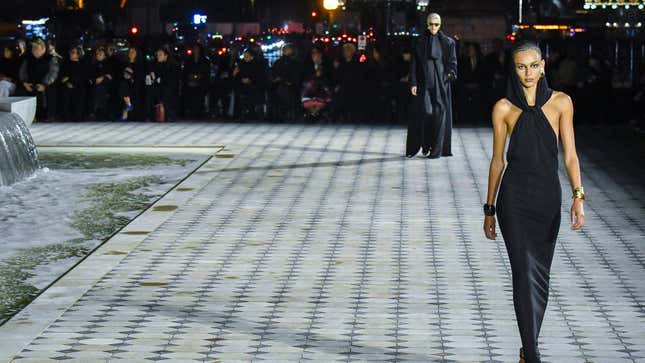Proposed New York Law Spotlights Sexual Abuse of Fashion Models
The bill, which wouldn’t exist without the models and survivors who advocated for it endlessly, aims to protect fashion workers from exploitation.
BeautyStyle

Fashion models gracing the runways of New York Fashion Week aren’t typically the sort of workers to elicit much sympathy from the general public. They get to wear high-end designer clothes for a living. They’re associated with enormously wealthy celebrities like Gigi Hadid and Kendall Jenner, couture collections from Miu Miu or Jacquemus, and looking perfect at all times. But a group of sexual abuse survivors and former models want you to know that they are also regularly subjected to financial and sexual exploitation and abuse.
A new bill proposed in the New York state legislature, the Fashion Workers Act, seeks to protect fashion models from enforced financial dependency, physical abuse, and sex trafficking, according to the Guardian. The bill, geared towards models, makeup artists, and other vulnerable workers in the fashion industry, is set to be discussed in the upcoming 2023 legislative session in January.
The legislation wouldn’t exist without the models and survivors who advocated endlessly for institutionalized labor protections, several of whom are among the women who came forward against Harvey Weinstein, now a convicted sex criminal. Kaja Sokola, a model from Poland, was just 14 years old when she walked down a Polish runway in underwear. At 15, she was photographed in a see-through top, and, years later, would find herself the victim of Weinstein’s sexual misconduct.
-

-

-

-

-

-

-

-

-

-

-

-

-

-

-

-

-

-

-

-

-

-

-

-

-

-

-

-

-

-

-

-

-

-

-

-

-

-

-

-








































